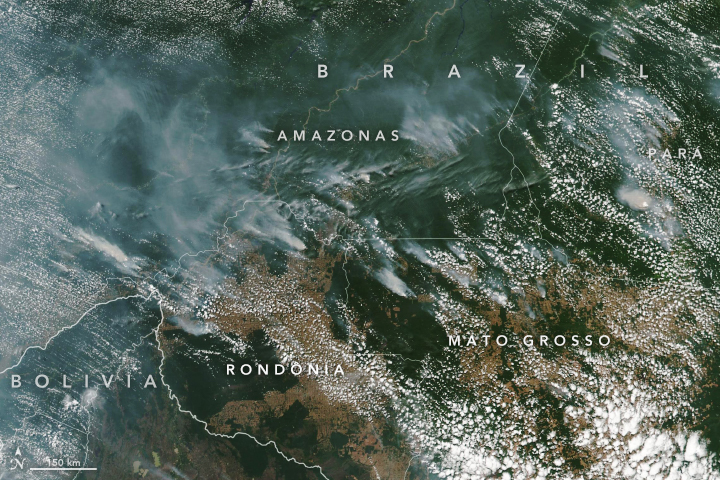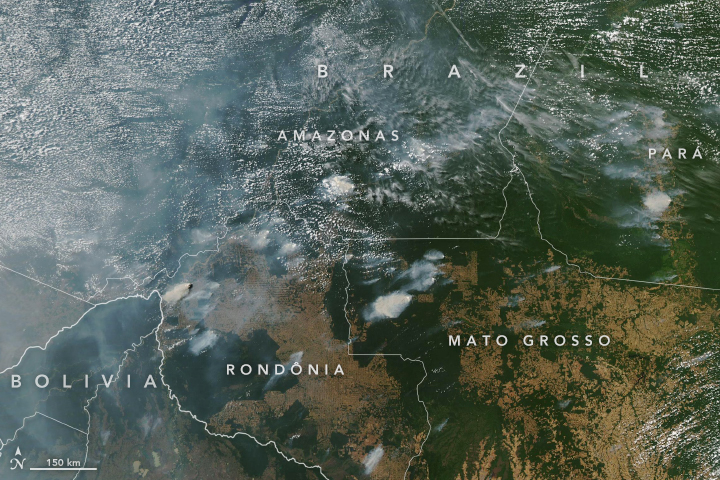Fire season has arrived in the Amazon Rainforest and the smoke from the inferno can be seen from space. NASA recently released satellite images of the visible smoke over the Brazilian states Amazonas, Rondônia, Pará and Mato Grosso.

Satellite images of Brazil. Image source: NASA
Between the dry season of July and August, the Amazon experiences a spike in fires. The rest of the year, blazes are rare due to wet weather conditions that inhibit fires from starting and spreading, according to NASA.
The BBC reports that the National Institute for Space Research (Inpe) detected over 74,000 fires between January and August 2019. This is the highest number of fires recorded since documenting of fires began in 2013.
Since Thursday 15 August, Inpe has recorded over 9,500 fires. Most of these have occurred in the Amazon region. In 2018 there were less than 40,000 fires recorded.
On Monday, 19 August the city of São Paulo went completely dark during the day.
The BBC reports that smoke from the Brazilian states of Rondônia and Amazonas, some 2,736 km away, had blackened the sky above São Paulo for about an hour. Strong winds had carried the smoke over to the city.

Satellite images of Brazil. Image source: NASA
There is mass concern over the future of the Amazon Rainforest, which absorbs about 2.2 billion tons (2 billion metric tons) of carbon dioxide, according to Live Science. The Amazon basin is also home to an estimated three million species of plants and animals, and one million indigenous people, reports the BBC.
Across various social media platforms, there is public outcry for the devastation that the fires are causing. The hashtag #PrayForAmazonia has gone viral.
Image source: Twitter
You may also like
Related Posts
China’s National Health Commission has published a list of controversial coronavirus treatments that have animal...
read more
Warmer sea temperatures in the summer months, especially in February, were recorded and are believed...
read more
The latest report indexing the world's happiest countries has highlighted the important role of...
read more